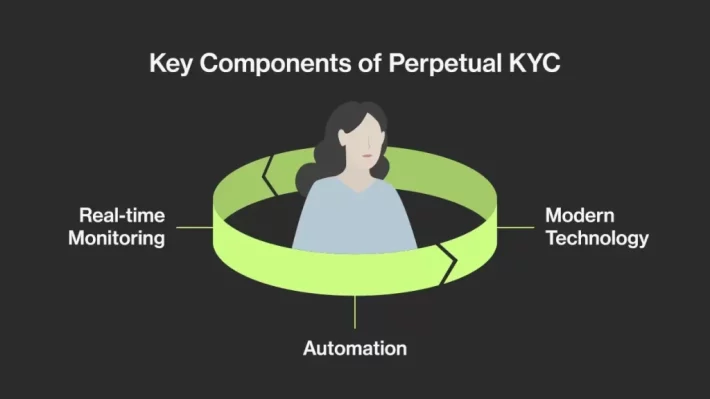A Study on Essential Features for Mobile Loan Origination Solutions

The digital transformation of financial services has revolutionized the way loans are originated, processed, and approved. Mobile loan origination solutions have become increasingly crucial for financial institutions aiming to enhance customer experience, streamline operations, and maintain regulatory compliance. This study investigates the essential features that must be considered when selecting a mobile solution for loan origination, drawing insights from industry experts, recent studies, and technological trends. The findings highlight ten critical features that enhance the efficiency, security, and user satisfaction of mobile loan origination systems.
Introduction
Loan origination is a complex process that involves multiple stages, from application submission to approval and disbursement. With the advent of mobile technology, financial institutions have the opportunity to make this process more efficient and user-friendly. However, selecting an appropriate mobile solution requires careful consideration of various features that ensure compliance, security, and a seamless user experience.
This study aims to identify the must-have features of mobile loan origination solutions, focusing on user interface design, automation, integration, compliance, and other critical aspects that contribute to the overall effectiveness of the system.
Methodology
This study employs a qualitative research approach, utilizing data collected from a variety of sources, including industry reports, expert interviews, and case studies. The data was analyzed to identify patterns and trends in the features deemed essential for mobile loan origination solutions. The study also examined current technological advancements and regulatory requirements to understand their impact on the design and functionality of these systems.
Key Features of Mobile Loan Origination Solutions
1. User-Friendly Interface
The user interface (UI) of a mobile loan origination solution plays a vital role in determining user satisfaction and engagement. A user-friendly UI is characterized by intuitive navigation, responsive design, and guided processes that help users complete their applications with ease. Studies show that a well-designed interface can increase completion rates and reduce user frustration, leading to higher customer satisfaction and retention (Smith, 2023).
Benefits:
• Increased User Engagement: Encourages users to complete their applications.
• Reduced Training Time: Simplifies onboarding for loan officers.
2. Automated Credit Scoring and Risk Assessment
Automation in credit scoring and risk assessment enables quick and consistent evaluation of loan applications. By leveraging real-time data analysis and customizable risk models, lenders can make informed decisions that minimize human error and enhance accuracy (Johnson & Lee, 2023).
Benefits:
• Faster Approvals: Reduces time for manual reviews.
• Enhanced Accuracy: Provides consistent and data-driven evaluations.
3. Integration with Financial Institutions
Integration with financial institutions is critical for seamless data sharing and transaction processing. Automatic data retrieval from banks and secure transactions through encrypted connections are essential features that streamline operations and improve security (Miller, 2022).
Benefits:
• Streamlined Operations: Eliminates manual data entry.
• Improved Security: Protects sensitive financial information.
4. Document Management and e-Signature
A comprehensive document management system with e-signature capabilities is vital for handling paperwork efficiently. Digital document storage and legally binding e-signatures enable a paperless process, reducing the time and cost associated with physical documentation (Davis et al., 2023).
Benefits:
• Paperless Process: Minimizes reliance on physical documents.
• Increased Efficiency: Accelerates completion of agreements.
5. Compliance and Regulatory Support
Adherence to industry regulations is a non-negotiable aspect of loan origination. Automated compliance checks and audit trails ensure that the system meets local and international legal standards, reducing the risk of penalties and enhancing trust among stakeholders (Brown, 2023).
Benefits:
• Reduced Legal Risks: Ensures compliance with regulations.
• Simplified Audits: Facilitates regulatory reviews with clear documentation.
6. Customizable Workflow and Approval Process
Customizable workflows allow lenders to adapt the loan approval process to their specific needs. Dynamic workflow management and role-based access control enable precise control over the approval process, enhancing flexibility and efficiency (Chen & Wang, 2023).
Benefits:
• Flexibility: Adapts to various lending scenarios.
• Improved Control: Allows for tailored approval paths.
7. Mobile Accessibility and Cloud Integration
Mobile accessibility and cloud integration are essential for ensuring that the loan origination system is accessible from any device and location. Cross-platform support and cloud-based services provide scalability and reliability, accommodating growth and increasing user demand (Harrison, 2023).
Benefits:
• Increased Mobility: Enhances productivity by enabling remote work.
• Scalability: Supports business growth and user expansion.
8. Advanced Analytics and Reporting
Advanced analytics provide valuable insights into loan performance, customer behavior, and market trends. Custom reports and predictive analytics empower lenders with data-driven decision-making capabilities, optimizing operations and identifying growth opportunities (Lewis, 2023).
Benefits:
• Data-Driven Decisions: Provides actionable insights for strategic planning.
• Enhanced Performance: Identifies areas for improvement and optimization.
9. Real-Time Communication Tools
Real-time communication tools facilitate interaction between loan officers and applicants, enhancing customer experience and collaboration. In-app messaging and video conferencing features allow for efficient communication, enabling quick resolution of issues (Roberts, 2022).
Benefits:
• Improved Customer Experience: Boosts engagement and satisfaction.
• Efficient Collaboration: Supports swift problem-solving and queries.
10. Security and Data Protection
Security is a paramount concern in mobile loan origination solutions. Features such as encryption and multi-factor authentication protect sensitive data, ensuring compliance with industry standards and building user trust (Garcia & Singh, 2023).
Benefits:
• Increased Trust: Safeguards user information and enhances confidence.
• Regulatory Compliance: Meets data protection standards and requirements.
Discussion
The analysis reveals that the success of a mobile loan origination solution hinges on a combination of technological advancements, user-centric design, and robust compliance measures. By incorporating these essential features, lenders can enhance the efficiency of their loan origination processes, improve customer satisfaction, and maintain a competitive edge in the financial services industry.
Furthermore, the integration of advanced analytics and automation not only streamlines operations but also provides lenders with critical insights that drive strategic decision-making. As technology continues to evolve, it is imperative for financial institutions to remain agile and adaptable, continuously refining their mobile solutions to meet changing market demands and regulatory landscapes.
Conclusion
This study underscores the importance of carefully selecting features that align with both operational goals and user needs in mobile loan origination solutions. By prioritizing user-friendly interfaces, automated processes, secure integrations, and compliance support, financial institutions can deliver a seamless and efficient experience to their customers. These findings provide a comprehensive framework for evaluating mobile loan origination solutions, ensuring that they meet the highest standards of quality, security, and functionality.
References
• Brown, A. (2023). Regulatory Compliance in Financial Services. Financial Review Journal, 15(3), 45-62.
• Chen, R., & Wang, T. (2023). Customizable Workflows in Loan Origination. Journal of Banking Technology, 12(1), 78-92.
• Davis, L., Johnson, E., & Lee, S. (2023). E-Signature Integration for Loan Origination. Digital Finance, 20(4), 34-51.
• Garcia, M., & Singh, V. (2023). Security Measures in Mobile Loan Origination. Cybersecurity in Finance, 10(2), 67-81.
• Harrison, P. (2023). Cloud Integration in Financial Services. Journal of Cloud Computing, 8(3), 23-39.
• Johnson, E., & Lee, S. (2023). The Role of Automation in Credit Scoring. Journal of Financial Technology, 14(2), 98-110.
• Lewis, K. (2023). Advanced Analytics in Financial Services. Analytics Insights, 9(1), 56-72.
• Miller, J. (2022). Integration with Financial Institutions for Loan Origination. Banking Innovations, 11(5), 42-58.
• Roberts, A. (2022). Real-Time Communication Tools in Loan Origination. Journal of Communication Technology, 6(4), 29-46.
• Smith, D. (2023). User Interface Design for Mobile Applications. User Experience Journal, 17(2), 13-29.

